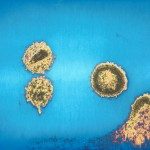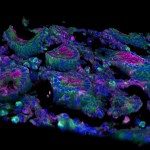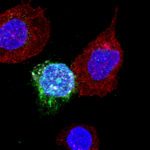Link to Pubmed [PMID] – 34195579
Link to DOI – 10.1016/j.eclinm.2021.100963
EClinicalMedicine 2021 Jul; 37(): 100963
Less than 1% of Human Immunodeficiency Virus (HIV)-infected individuals are able to achieve spontaneous viral control without requiring antiretroviral therapy (ART). Whether these HIV controllers (HIC) are at risk of HIV-associated comorbidities and could benefit from ART is debated, but recent studies reported decreased T-cell activation upon ART initiation. We report the frequency of ART initiation, reasons to treat, treatment outcome on immunovirological parameters, and rate of side-effects and treatment discontinuation in the French cohort of HIC.Participants included in the French multicenter Agence Nationale de Recherche sur le SIDA et les Hépatites (ANRS) Cohorte des extremes (CODEX) cohort of HIC between July 6, 2007 and January 3, 2018 were prospectively followed. ART initiation, indication, discontinuation, non-Acquired ImmunoDeficiency Syndrome (AIDS)-defining events, side-effects, and immunovirological parameters were recorded. Undetectable HIC (u-HIC) were defined as participants with strictly undetectable viral loads based on routinely used assays throughout the follow-up and blipper HIC (b-HIC) as participants with possible detectable viral loads above the detection threshold during follow-up.Among 302 HIC followed for a median of 14.8 years [10.3-20.2], 90 (30%) received ART (7 u-HIC and 83 b-HIC). The main reasons for ART initiation were decreased CD4 T-cell counts (n = 36, 40%), loss of virological control (n = 13, 14%), and non-AIDS-defining events (n = 12, 13%). Sixteen (18%) participants experienced 17 grade 1-2 adverse events. In b-HIC, ART slightly increased the CD4/CD8 ratio (median +0.19, p < 0.0001) and decreased the frequency of circulating CD38+ HLA-DR.+ CD4 and CD8 lymphocytes (median -0.75%, p = 0.003, and -2%, p < 0.0001, respectively), but these changes were not observed for treated u-HIC. Thirteen (14%) participants discontinued ART (5 (38%) because of side-effects, and 10 remained HIC after treatment cessation (median follow-up: 305 days [235-728]).Only 30% of participants in this large cohort of HIC required ART during a median follow-up of 14.8 years. These results show that HIC status is very stable and vouch for a patient-centered treatment decision based on the individual benefit/risk balance.



